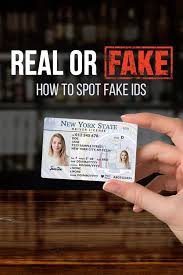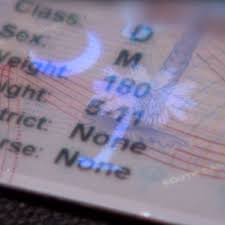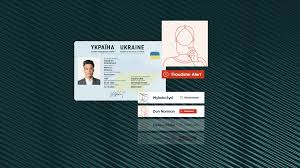University ID Cards
1. Introduction: The Role of University ID Cards in Modern Campus Life (1,000 words)
Overview of University ID Cards
Introduce the concept of university ID cards as a critical tool for identity verification and access within educational institutions. Discuss how university ID cards have evolved from simple photo identification to multifunctional digital tools.Importance in the Digital Age
Explore how university ID cards have transitioned in the digital era, integrating advanced features like smart chips, contactless technology, and mobile compatibility.Impact on Students and Campus Operations
Emphasize how the modern ID card impacts students' daily lives—from entering dorms and accessing libraries to making purchases at campus facilities.
2. Product Features of Modern University ID Cards (2,000 words)
Identification and Authentication
The primary feature of university ID cards is to serve as a reliable form of identification. Delve into the security measures, such as biometric data and encryption, that ensure authenticity.Access Control and Security
Discuss how ID cards are used to manage access to specific campus locations, such as residence halls, computer labs, and gym facilities. Review the integration with security systems for real-time monitoring and threat response.Cashless Payments and Transactions
Explain the growing use of university ID cards for cashless payments on campus, including at dining halls, bookstores, and vending machines. Include examples of payment technologies such as NFC (Near Field Communication) and mobile wallet integration.Library and Academic Services Access
Highlight the card’s role in granting access to academic services, from borrowing library books to accessing online academic resources and databases.Health and Fitness Center Access
Many campuses integrate ID cards with health and fitness services, allowing students to check into recreational centers or book equipment.Event Ticketing and Attendance Tracking
Show how ID cards can streamline event ticketing, track attendance, and manage capacity for university-organized activities.Integration with Mobile Platforms
Discuss the shift towards digital ID cards that work with mobile devices. Highlight the convenience of mobile apps where students can display their ID digitally, check balances, or add funds.
3. Technological Innovations in University ID Cards (1,500 words)
Smart Chips and RFID (Radio-Frequency Identification)
Explore how embedded chips (both contact and contactless) are used to store data, authenticate users, and facilitate transactions.Biometric Integration
Introduce how some ID cards now incorporate biometric data, like fingerprint or facial recognition, to improve security and personalize access.Mobile and Digital IDs
Dive deep into mobile ID cards, which allow students to store their university IDs on smartphones. Discuss the challenges and benefits of shifting from physical to digital cards.Blockchain for Identity Verification
Explain how blockchain technology can be utilized to enhance security and ensure the integrity of ID card data. Review the potential of decentralized identity systems.Cloud-Based Access Control Systems
Look into the role of cloud technology in managing access and ID cards, enabling remote monitoring, updates, and integration with other campus systems.
4. Market Analysis: Trends, Challenges, and Growth in the University ID Card Industry (1,500 words)
Global Market Overview
Provide an analysis of the global market for ID cards, particularly in higher education. Review key players in the industry, from ID card manufacturers to software providers.Key Market Trends
Discuss trends such as the shift to contactless cards, the rise of mobile ID solutions, and the focus on enhanced campus security.Market Drivers
Explore factors driving the growth of the university ID card market, such as increased security concerns, the rise of smart campus initiatives, and the demand for cashless payments.Challenges and Barriers to Adoption
Identify barriers, such as the cost of implementing advanced ID systems, concerns around student privacy, and technological integration challenges.Future Outlook
Analyze the future of the university ID card market, including predictions for further technological advancements, adoption of artificial intelligence, and the growth of digital ID platforms.
5. Target Audience: Universities, Students, and Administrators (1,000 words)
Primary Audience: University Administrators and IT Departments
Explain why university administrators and IT departments are the key decision-makers in selecting and implementing ID card systems. Discuss the factors they consider when evaluating solutions, such as cost, ease of use, and security features.Secondary Audience: Students and Campus Staff
Address how students and campus staff use ID cards daily and what features are most beneficial to them, such as convenience, security, and integration with other campus services.Understanding Diverse Needs Across Institutions
Differentiate between the needs of large universities versus smaller colleges, urban versus rural campuses, and public versus private institutions in terms of ID card implementation.Inclusivity Considerations
Discuss how university ID card systems can be made more inclusive, ensuring they accommodate international students, students with disabilities, and other diverse groups.
6. Benefits of University ID Cards for Campus Life (1,500 words)
Enhanced Campus Security
One of the most critical benefits of university ID cards is improving campus security. Explore case studies where ID cards have helped prevent security breaches and managed campus-wide emergencies.Streamlined Student Services
Explain how university ID cards improve access to student services, reducing administrative burdens and allowing for smoother campus operations.Improved Student Engagement
Discuss how integrating ID cards into campus activities and services increases student engagement and satisfaction.Convenience and Efficiency
Review how multifunctional ID cards offer convenience to students and staff, eliminating the need for multiple cards or keys for different services.Data Collection and Insights
Many ID systems offer universities valuable insights into student behaviors, such as attendance patterns, service usage, and campus movement trends.
7. Implementing a University ID Card Program: Best Practices and Considerations (1,000 words)
Selecting the Right System
Guide universities through the process of selecting the right ID card system, considering factors such as security, scalability, and ease of integration.Balancing Security with Privacy
Explore the importance of protecting students’ personal data and balancing robust security features with privacy concerns.Training and Support for Students and Staff
Offer recommendations on how universities can ensure smooth adoption, including training programs and ongoing support for students and staff.Future-Proofing the System
Discuss the importance of choosing ID solutions that can evolve with future technological advancements and campus needs.
8. Conclusion: The Future of University ID Cards in Higher Education (500 words)
The Ongoing Evolution of ID Cards
Reiterate the continuous evolution of university ID cards, from physical cards to digital, and speculate on how future advancements (e.g., AI integration, augmented reality) might shape their development.The Role of Universities in Shaping Future Solutions
Discuss how universities can take an active role in influencing the next generation of ID card solutions by collaborating with tech developers and incorporating student feedback.Final Thoughts
Summarize the importance of university ID cards not just as tools for identification but as central components in creating a safer, more efficient, and more engaging campus environment.
 Fake Florida ID
Fake Florida ID
 Buy Fake University ID
Buy Fake University ID
 ID security features
ID security features
 University ID Cards
University ID Cards
 novelty identification
novelty identification
 Fake University ID
Fake University ID
 University security solutions
University security solutions

